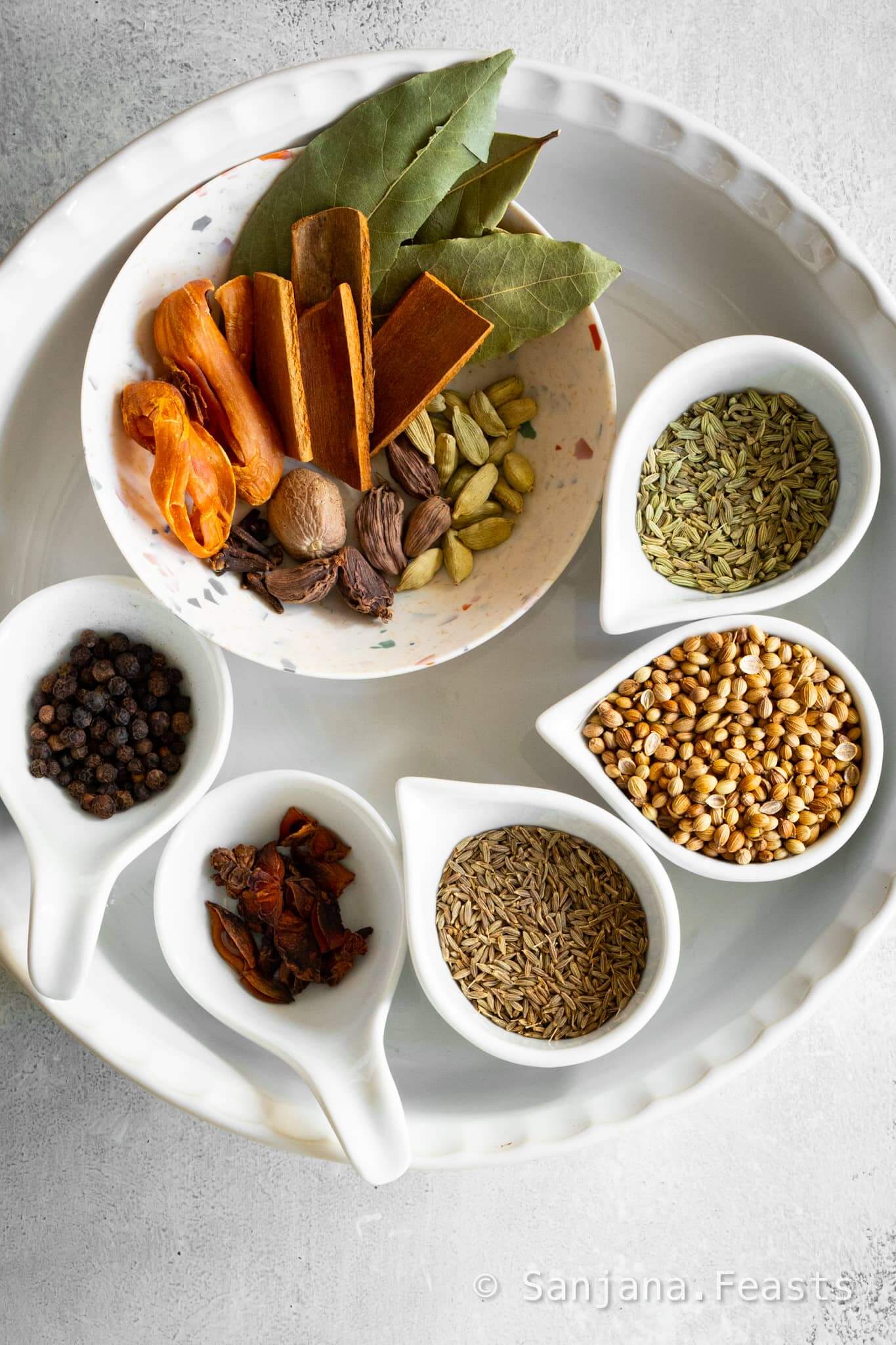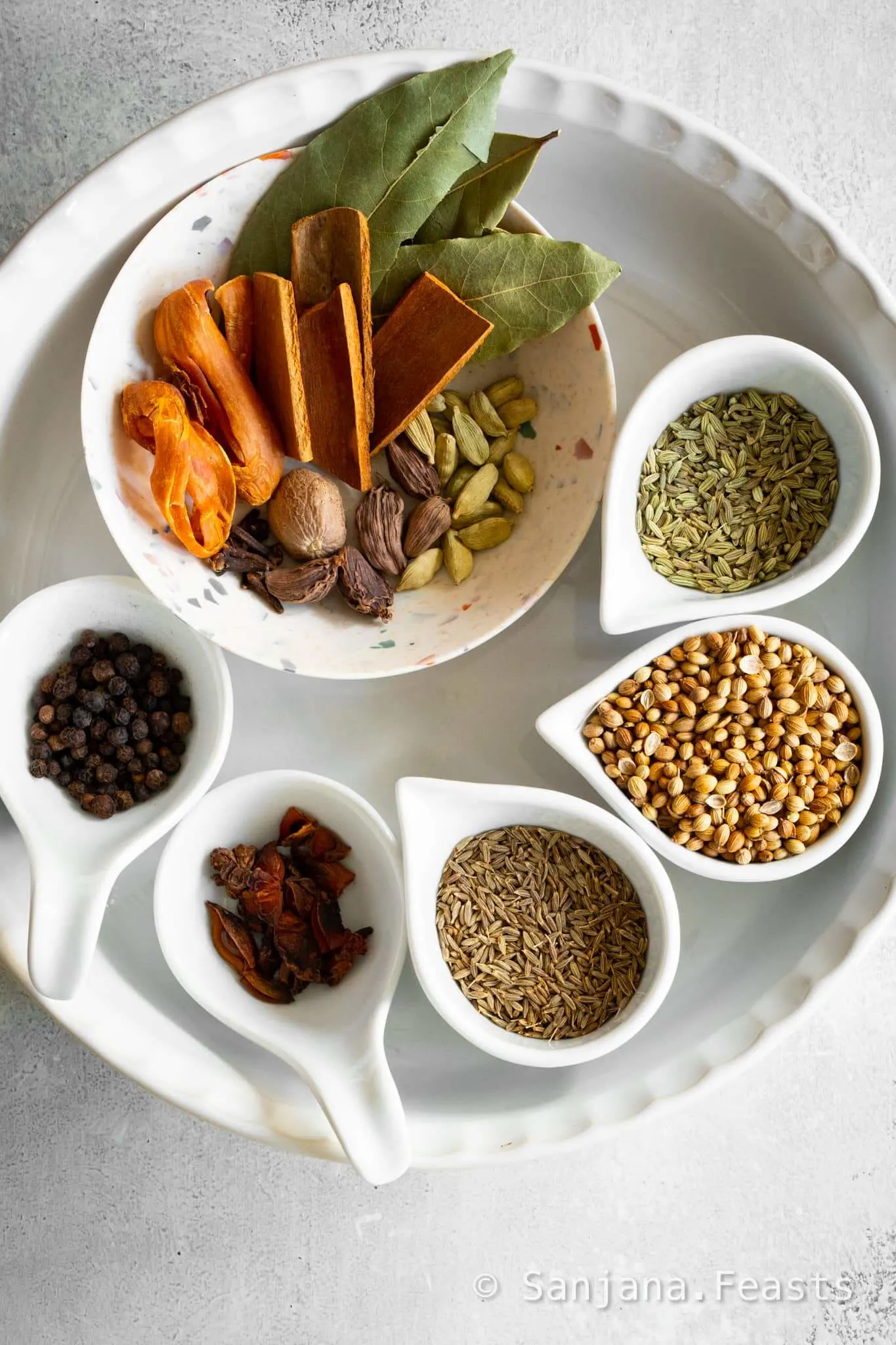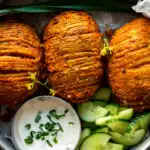My blend uses plenty of aromatics and not too much heat. This is so you can adjust the spice level of the dishes you cook. Easy!
What is Garam Masala?
Garam masala (Hindi: गरम मसाला) is a blend of warming spices, used most often in North Indian recipes. Why? The cooler climate calls and rich Mughlai and Central Asian influences on North Indian cuisine are very well suited to the “garam” (warm) spices in garam masala. Garam masala is a flavour protagonist in lots of North Indian sub-cuisines: Awadhi, Rajasthani, Bihari, Punjabi and Himachali to name a handful.
Which other cuisines use Garam Masala?
The use of this aromatic and warming blend of spices extends beyond the borders of India. Indeed, Garam Masala is a popular in Pakistani, Sri Lankan, Nepalese, Bangladeshi, African, Caribbean and Afghan cuisines. Garam masala is a blend that also features heavily in British Indian Restaurant (BIR) cookery.
What is Garam Masala made from?
Almost every family will have their own preferences. There is no one-size fits all answer. Most recipes for garam masala call for a varying blend of the following spices: Coriander seeds, cumin seeds, fennel seeds, Indian bay leaves, cloves, cinnamon (or cassia), nutmeg, mace, peppercorns, black and green cardamom. Some recipes call for dried chillies, while others do not. Other additions can include ajwain and asafoetida. It simply depends on individual preference.
Is Garam Masala the same as curry powder?
No. Curry powder is a generic name for any blend of spices. Usually curry powder is specific to the region in which it is developed. Curry powder is usually yellow in colour (due to the addition of turmeric), whereas garam masala is typically brown. Many world cuisines extending from Asia to the Caribbean have their own unique curry powders. Garam masala refers specifically to an Indian-style blend of spices.
Some of my favourite recipes that call for Garam Masala
Homemade vs. shop bought
There’s no denying the heady wave of flavour homemade garam masala brings. Add it to a curry, samosa filling or rice dish and it surpasses mediocrity and becomes a complete flavour bomb. Having said this, I always keep a good blend of shop-bought Garam Masala in my cupboard for when I’m short of time and the homemade stuff. I like both Jalpur Millers Garam Masala and BART Punjab Masala when it comes to the shop bought kind.
Does roasting masalas shorten their shelf life?
In short, yes. Applying heat to spices teases out their natural oils and flavours.
How to store this masala
I advise you make any homemade masala in small batches and use within 6 months. Keep in an airtight container to prolong flavour and freshness.
Tips for making Homemade Garam Masala
A dry frying pan is perfect for getting the spices nicely toasty. You don’t need to use oil for dry masalas.Don’t toast the spices over a high heat. A low heat will help coax the oils from the whole spices perfectly. Patience pays off.Keep the spices moving the whole time they’re in the pan to ensure they don’t burn. They have a tendency to catch in hotspots.Let the spices cool completely before you grind them.Store the Homemade Garam Masala in an airtight jar or container for up to six months. It’s okay to leave it beyond this date but the spices may lose some of their potency.I recommend making masalas in small batches so you can use them at their best.
Shop my Homemade Garam Masala: Spices & equipment
Homemade Garam Masala recipe
If you like this, you’ll love my recipe for Garam Masala Potato Gratin
More recipes you might like
Love Sanjana Share this recipe

























